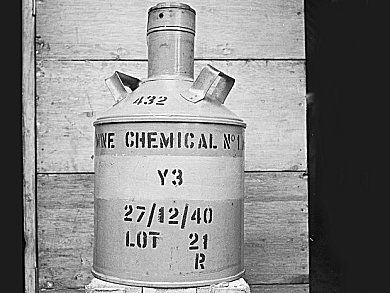100 years after the first gas attack of WWI, Sarah Everts, C&EN Berlin, looks at the historical background, and how the attack changed warfare and led into ethical discussions of weapons.
On April 22, 1915, the Germans launched the first large-scale gas attack against Allied troops in Ypres, Belgium. The chemist Fritz Haber convinced the German High Command to use poison gas as a weapon, although many Western nations including Germany had already implemented an international treaty against chemical weapons. Haber oversaw the deployment of 170 metric tons of chlorine gas in nearly 6,000 cylinders. The gas attack decimated two French divisions – more than 1,100 people died and 7,000 were injured. The German Army couldn’t capitalize on this, as the High Command was not expecting much of the experiment and had not assigned enough backup troops to take Ypres. In the course of the war, the Germans introduced the most prevalently used chemical weapons, namely chlorine, phosgene, and mustard gas; however, the Allies were quick to catch up.
Fritz Haber is an important but also controversial scientist. He invented a straightforward strategy for nitrogen fixation that lead to the Haber-Bosch process, for which he received the 1918 Nobel Prize in Chemistry. Today the Haber-Bosch process remains the workhorse of industry. However, the process was also vital for manufacturing nitrogen-based explosives, and Fritz Haber was also involved in the synthesis and deployment of poison gas.
- When Chemicals Became Weapons Of War,
Sarah Everts,
Chemical & Engineering News 2015, 93(8). - Who Was Fritz Haber?,
Sarah Everts,
Chemical & Engineering News 2015, 93(8).




